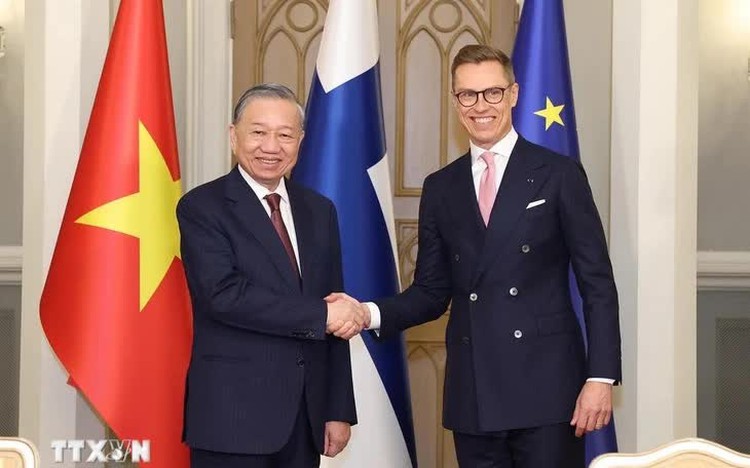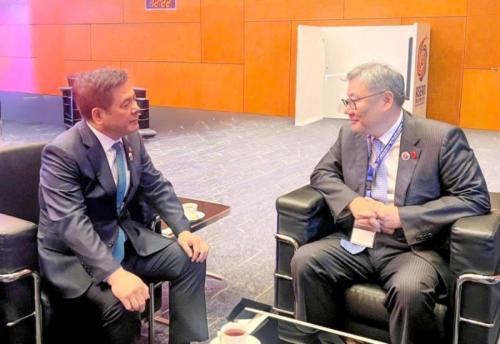Vietnam, Finland upgrade bilateral relations to strategic partnership
Vietnam and Finland have officially elevated their relationship to a strategic partnership through a joint statement aimed at deepening cooperation in trade, investment, technology, education, and other key sectors.
The upgrade followed talks between Vietnamese Party General Secretary To Lam and Finnish President Alexander Stubb in Helsinki on Tuesday, during Lam’s official visit from Monday to Wednesday at Stubb’s invitation.
President Stubb welcomed Lam’s visit, the first official trip to Finland by a Vietnamese Party general secretaty since the two countries established diplomatic ties in 1973, according to Vietnam’s Ministry of Foreign Affairs.
Stubb said Finland considers Vietnam its most important trading partner in Southeast Asia and praised Vietnam’s recent socio-economic progress, calling it a ‘success story.’
Lam, in turn, thanked Finland for supporting Vietnam’s post-war reconstruction and ongoing development, describing the Nordic country as a ‘reliable partner’ in Vietnam’s next stage of growth.
Both leaders discussed strategic directions for elevating the Vietnam–Finland partnership in line with the two countries’ potential and growing international stature.
They agreed to prioritize cooperation in areas vital to future development, including the circular economy, green transition, maritime sustainability, digital transformation, environmental protection, and climate action.
On trade, the two sides pledged to help businesses from both countries expand partnerships, particularly in agriculture and consumer goods.
Lam said Vietnam welcomes Finnish investment and hopes to serve as a bridge for Finnish companies seeking access to both EU and ASEAN markets.
He also urged Finland to encourage the remaining seven EU member states to ratify the EU–Vietnam Investment Protection Agreement and to urge the European Commission to lift the ‘yellow card’ warning on Vietnamese seafood exports related to illegal, unreported, and unregulated fishing.
Stubb reaffirmed Finland’s readiness to cooperate in fields where it has expertise and Vietnam has demand, including forestry, circular economy, science and technology, education, and climate change mitigation.
Following the talks, the two leaders issued a seven-point joint statement officially upgrading bilateral relations to a strategic partnership.
The statement emphasizes boosting trade and investment, leveraging bilateral and multilateral agreements, and positioning Finland as a gateway for Vietnamese goods to the EU and Vietnam as a strategic hub for Finnish firms in Asia.
In science and technology, both sides plan to collaborate on e-government, digital transformation, artificial intelligence, semiconductor technology, 5G/6G telecommunications, and green innovations.
They also aim to strengthen their innovation ecosystems, startup programs, and capacities in smart infrastructure and digital governance.
The two countries are further committed to expanding people-to-people exchanges and cooperation between localities.
After their talks, General Secretary Lam and President Stubb witnessed the signing of three memorandums of understanding on bilateral cooperation between the two countries.
The agreements include one between Vietnam’s Ministry of Agriculture and Environment and Finland’s Ministry of Environment, and two others involving Vietnam’s Ministry of Finance, Finland’s Ministry of Foreign Affairs, and the Finnish Export Credit Agency.
Source: Vinh Tho - Duy Linh / Tuoi Tre News
Photo: Vietnam News Agency





